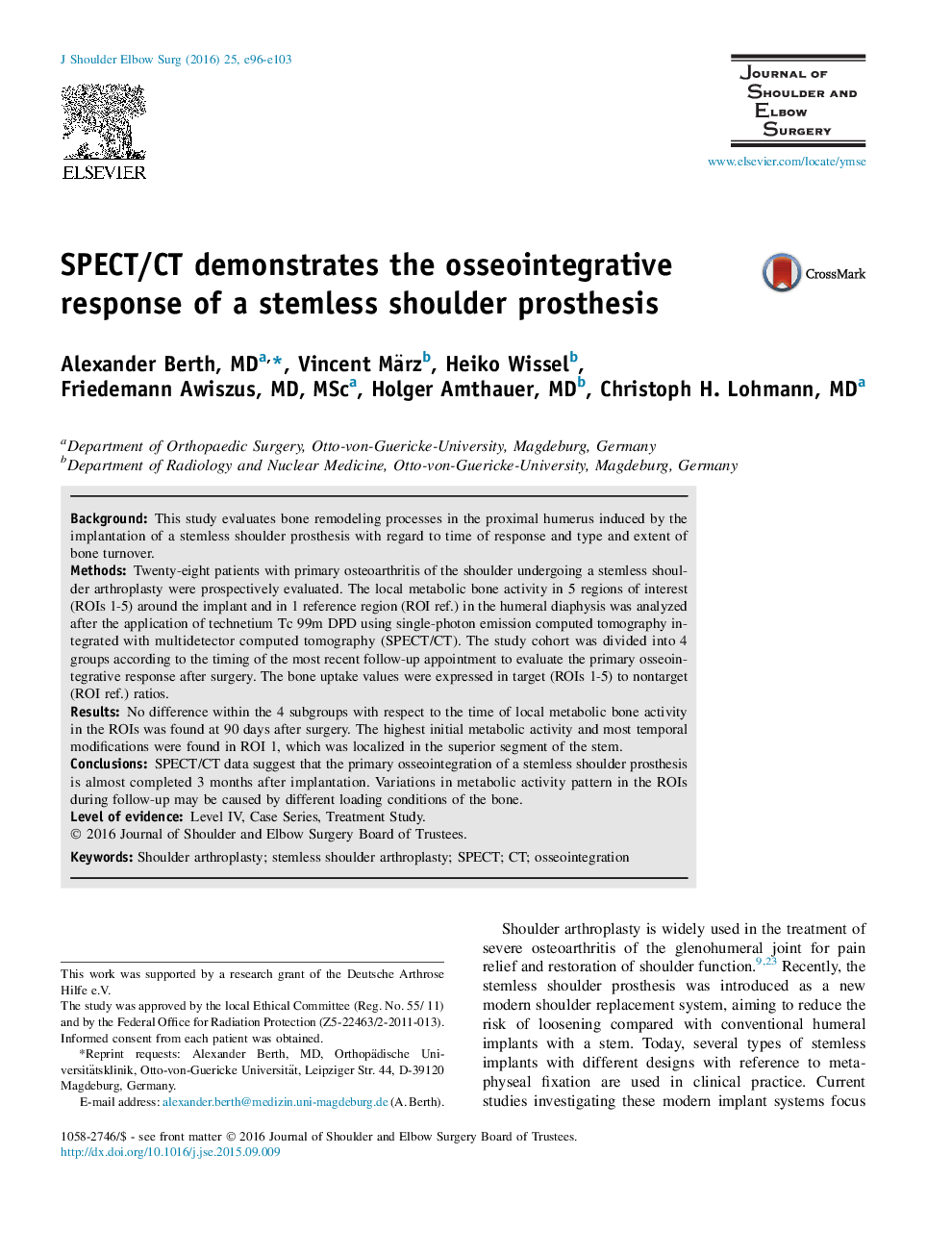| Article ID | Journal | Published Year | Pages | File Type |
|---|---|---|---|---|
| 4073144 | Journal of Shoulder and Elbow Surgery | 2016 | 8 Pages |
BackgroundThis study evaluates bone remodeling processes in the proximal humerus induced by the implantation of a stemless shoulder prosthesis with regard to time of response and type and extent of bone turnover.MethodsTwenty-eight patients with primary osteoarthritis of the shoulder undergoing a stemless shoulder arthroplasty were prospectively evaluated. The local metabolic bone activity in 5 regions of interest (ROIs 1-5) around the implant and in 1 reference region (ROI ref.) in the humeral diaphysis was analyzed after the application of technetium Tc 99m DPD using single-photon emission computed tomography integrated with multidetector computed tomography (SPECT/CT). The study cohort was divided into 4 groups according to the timing of the most recent follow-up appointment to evaluate the primary osseointegrative response after surgery. The bone uptake values were expressed in target (ROIs 1-5) to nontarget (ROI ref.) ratios.ResultsNo difference within the 4 subgroups with respect to the time of local metabolic bone activity in the ROIs was found at 90 days after surgery. The highest initial metabolic activity and most temporal modifications were found in ROI 1, which was localized in the superior segment of the stem.ConclusionsSPECT/CT data suggest that the primary osseointegration of a stemless shoulder prosthesis is almost completed 3 months after implantation. Variations in metabolic activity pattern in the ROIs during follow-up may be caused by different loading conditions of the bone.
